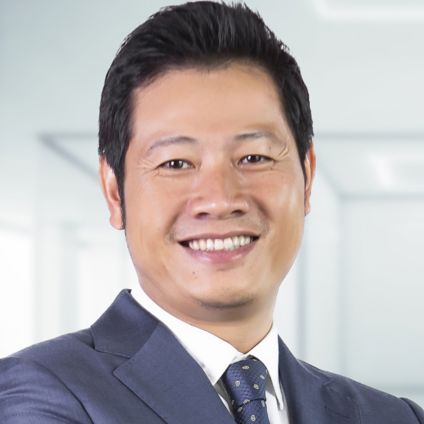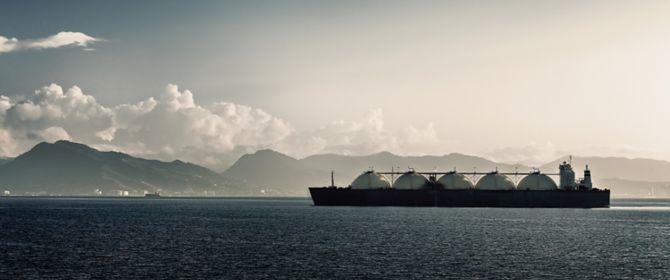Managing the trade and customs function
Trade and customs teams have their hands full these days as disruptions in global supply chains persist. However, looking ahead, the coming years hold the promise of new opportunities for growth, especially in the Asia Pacific region, and for trade and customs teams to help their companies realize more value.
For now, the ongoing pandemic continues to prompt unexpected actions from regulators and can create unexpected barriers to the flow of goods. Supply chain bottlenecks, raw material and component shortages, rising freight costs and infrastructure issues are hampering the distribution of goods to organizations and consumers alike. As has been widely reported and experienced across the region, current examples include:
- Some ports in the region are full of shipping containers that remain unloaded because workers are in lockdown or otherwise unable to work, while other ports are suffering from container shortages.
- The Australian government has needed to continue to support high-value exports shipped by air through an International Freight Assistance Mechanism due to the lack of passenger aircraft travelling to the country, which has severely affected air cargo movements.
- Thousands of laptop orders remain unfulfilled due to slowdowns in the manufacture of microchips.
- Some semi-conductor makers do not expect to return to full production capacity for 2 to 3 years, putting a range of industries under severe stress, including the automotive and electrical goods industries.
- A surge in demand for bicycles, whether for recreation or as an alternative to mass transport, has made these vehicles and their parts in short supply worldwide.
As virus variants emerge, many borders in the region remain shut, lockdowns are rotating from one jurisdiction to another, and companies are continuing to question whether their supply chains are as resilient as they could be. Many organizations are asking what they can do to ease the stress and meet their business goals —immediately and for the long term. Should they work to better diversify their supply chains by moving them closer to home or closer to their biggest markets? Are pre-pandemic supply and demand estimates and forecasts still reliable? Is it even possible to source all of the components for automobiles, computers and other complex products from one jurisdiction or region?
Now more than ever, shifting supply chains require trade and customs professionals to think and act with agility, and to align their business decisions as new agreements multiply. Trade and customs teams should consider how to access free trade agreements quickly when the supply chain changes, which agreements may offer future-proof access to preferential duties, which technology is best to support the trade function, and how to resource the trade function in such a dynamic environment.
Supply chain restructuring continues to challenge trade and customs professionals
Even before COVID-19, global trade disputes and geopolitical tensions were causing many companies to rethink the structure of their supply chains in the Asia Pacific region. A rising number of companies were moving their manufacturing operations to lower-cost locations, with India, Malaysia, Thailand and Vietnam among the most popular jurisdictions.
With growing markets, the possibility of reduced labor costs and the proliferation of free trade agreements, this long-term trend continues. While the pace has understandably slowed over the past 18 months, momentum is expected to pick up significantly toward the end of 2022 once vaccines are widely available in these jurisdictions and full-scale manufacturing returns to strength. Additionally, many jurisdictions in the region are likely to take more action to attract foreign investment with incentives and infrastructure development, especially in response to governments’ climate change commitments.
For example, trends in the manufacture of electric vehicles (EV) illustrate how companies in the region can move quickly into new areas and even overtake incumbents in the market. Until recently, making complex automotive vehicles was the domain of more developed jurisdictions, such as China, Japan, the Republic of Korea and Thailand. Now, smaller companies in emerging Asian markets are leveraging their sourcing ability to take a leading role in EV production.
Consider a Vietnamese automotive manufacturer, within 21 months of launching in Vietnam, this company became one of the leading car sellers in the country in most if not all of its competing segments. In 2022, the company plans to launch a new line of smart EVs globally. Its Vietnamese plant is built to be scalable and is situated close to a port that facilitates access to markets in the US, Europe and Asia Pacific.
Thailand is also moving quickly into the growing EV space by investing heavily in developing the sector[1], while Indonesia is working to become the Asia Pacific region’s primary EV battery producer and supplier[2].
This substantial change in the motor vehicle market is just one development putting pressure on trade and customs professionals working in both the upstream and downstream supply chain. Amid all the uncertainty and change, trade and customs teams are playing pivotal roles to help their companies in the sector manage shifts in the availability of component parts, analyze benefits under multiple relevant free trade agreements, and help the business meet complex requirements for accessing reduced duty rates for assembling vehicles in country.
E-commerce is another area of economic activity that has surged during the pandemic, leading to consolidation in the retail industry as a number of the world’s largest retailers move aggressively into new Asia Pacific markets. The importance of e-commerce was recognized in the recently signed Regional Comprehensive Economic Partnership (RCEP) agreement.
In some cases, lack of access to competitive freight rates has forced businesses that traditionally used an importer distributor model to transition to e-commerce as a way to get their goods to markets. However, the large volumes of small transactions and small packages are also an increasing disrupting factor for transport infrastructure, supply chain efficiency and taxation.
For trade and customs professionals, e-commerce gives rise to additional complexities regarding how the low value goods regimes work across the different jurisdictions and how these transactions are taxed. Many countries or territories where low value goods have traditionally been duty- and tax-free are reconsidering how these goods are taxed to provide fairness to traditional retailers in these jurisdictions.
In this complex environment, it is more important than ever for trade and customs professionals to keep up with emerging supply chain trends and the ever-changing rules of international trade.
Free trade agreements multiply across the region
As Asia-Pacific jurisdictions continue to expand their existing free trade networks, companies can often get a boost from the considerable import duty relief available in the region. For example:
- In 2020, 15 jurisdictions in the region, including Australia, China, Japan, New Zealand and Republic of Korea, signed the RCEP with 10 members of the Association of Southeast Asian Nations, making it the world’s largest free trade agreement. The RCEP is expected to come into force in 2022.
- The Comprehensive and Progressive Agreement for Trans-Pacific Partnership (CPTPP), signed in 2018, is now in force in Canada, Australia, Japan, Mexico, New Zealand, Singapore and Vietnam and pending ratification in Brunei, Chile, Malaysia and Peru.
- Countries in the region are also taking steps to reduce barriers and promote global trade unilaterally, including Vietnam, which recently reached separate free trade agreements with European Union and the UK.
The potential benefits of these agreements go beyond direct reductions in customs duties. They also provide opportunities for companies to rethink their supply chains, enter into new markets, make pricing more competitive, and gain access to a larger spectrum of suppliers, components and raw materials.
Trade and customs teams are well positioned to help companies make the most of these deals by applying their in-depth knowledge of customs laws and procedures, tariffs, trade agreements and rules of origin, as well as local incentives for investment. For companies seeking to expand into the Asia Pacific region, trade and customs professionals, in conjunction with supply chain and tax professionals, can help determine how to best develop the supply chain and advise on the most competitive jurisdictions for locating plants, sourcing inputs and setting up international sales and distribution functions.
However, as free trade agreements multiply, accessing their benefits is becoming much more complex, and missteps can lead to higher costs and missed opportunities. Significant effort is needed to determine which of the many agreements in the region provide the optimal benefits and then prepare the documentation needed to show that individual products qualify under each specific rule in an agreement.
For manufacturers and traders in the region, this is a daunting task and almost impossible to achieve without using trade technology. Even with technology, many companies struggle with a lack of resources to effectively optimize and remain current across these free trade agreements as they proliferate. This and the associated need to manage mass tariff classification are key reasons for our investment in managed services in these areas.
Global minimum taxes and incentives
Considerable work is also needed to keep up to date with local trade, tax and other incentives for foreign investment in infrastructure, green technologies and emerging issues such as carbon taxes. As governments seek to restore their finances when the pandemic ebbs, many of them will want to balance measures to attract new business and investment against their urgent revenue needs. This creates uncertainty over whether, and for how long, certain existing incentives will be maintained. It is also possible that any new incentives will be offered with shorter timeframes than in the past, making it more difficult for trade and customs teams to help their businesses plan for long-term investment.
For example, the prospect of a global minimum tax has the potential to disrupt many tax incentive schemes available in the Asia Pacific region and globally. On 20 December 2021, the Organisation for Economic Co-operation and Development (OECD) / G20 Inclusive Framework on Base Erosion and Profit Shifting, involving 137 countries, released Model Global Anti-Base Erosion (GloBE) Rules under Pillar Two, which subjects thousands of multinational groups around the world to a global minimum corporate tax rate of 15 percent [3].
This target rate is well below the rates available under special incentives across Asia Pacific, from larger jurisdictions, such as China, Republic of Korea and India, to emerging centers like Vietnam, Thailand and Malaysia. As currently planned, implementation could occur as soon as 2023 / 2024. This could spell the end for a vast array of lucrative incentives that are currently available and prompt many companies to again revisit their supply chain, sourcing and plant location strategies.
It is therefore extremely important that trade and customs professionals keep up with impending taxation changes so they can help companies plan for changes to incentives that currently also provide customs tariff reductions. By engaging early with tax, supply chain and trade and customs professionals, a business is better able to analyze scenarios, identify the possible results of these changes to their supply chains across the region, and plan for the optimal business outcomes.
Takeaways for trade and customs leaders
Managing trade and customs compliance locally while ensuring optimal access to trade agreements and incentives globally is complicated now and will probably become even more so in the years to come. It requires a large network of people in different places with different technical skills. It also requires robust and connected systems to give people the visibility they need to manage the company’s obligations, now and in the future as incentives change and as new trade deals, tariff modifications and global minimum tax rules come onstream.
Advanced technology is key to helping global trade and customs teams develop a global infrastructure for executing and monitoring all their routine, transactional import and export activities across jurisdictions. With many of these activities automated within a company-wide system and greater access to all of the company’s detailed data, tax and trade teams will be better equipped to contribute more strategically — for example, by keeping ahead of and modelling the impacts of proposed tariff increases, new free trade deals in the works, and other changes in business environment.
Outsourcing some or all routine trade and customs compliance tasks is an increasingly popular option, especially for large-scale global tariff classification, free trade agreement qualification and trade data monitoring. Based on KPMG firms experience, companies that take a managed services approach to trade compliance can significantly reduce cost and improve efficiency while elevating accuracy and quality. In addition, engaging a managed services provider can offer an efficient way for trade and customs teams to avoid being hindered by everyday trade issues. They can then shift their focus to areas that create more value for the company.
Perhaps most importantly, trade and customs teams that employ technology and managed services sourcing strategies can devote more time to improving the agility and flexibility of their supply chains. While the current environment is uncertain, companies in the Asia Pacific region are likely to have significant opportunities for growth in the coming years.
Forward-thinking trade and customs teams can help their companies achieve this growth by monitoring the regulatory and geopolitical trade environment, planning for potential disruptions in advance, and building alternatives and options into their supply chains. With this flexibility in place, the business can be well placed to seize new opportunities as they emerge.
1 https://www.bloomberg.com/news/articles/2021-04-22/thailand-lays-out-bold-ev-plan-wants-all-electric-cars-by-2035
2 https://asia.nikkei.com/Business/Automobiles/Indonesian-state-companies-set-up-EV-battery-developer
3 https://www.oecd.org/tax/beps/oecd-releases-pillar-two-model-rules-for-domestic-implementation-of-15-percent-global-minimum-tax.htm
Connect with us
Connect with us
- Find office locations kpmg.findOfficeLocations
- kpmg.emailUs
- Social media @ KPMG kpmg.socialMedia
Related content






